new posts in all blogs
Viewing: Blog Posts Tagged with: antiquarian books, Most Recent at Top [Help]
Results 1 - 6 of 6
How to use this Page
You are viewing the most recent posts tagged with the words: antiquarian books in the JacketFlap blog reader. What is a tag? Think of a tag as a keyword or category label. Tags can both help you find posts on JacketFlap.com as well as provide an easy way for you to "remember" and classify posts for later recall. Try adding a tag yourself by clicking "Add a tag" below a post's header. Scroll down through the list of Recent Posts in the left column and click on a post title that sounds interesting. You can view all posts from a specific blog by clicking the Blog name in the right column, or you can click a 'More Posts from this Blog' link in any individual post.

By: Kim Schwenk,
on 4/21/2016
Blog:
Lux Mentis, Lux Orbis
(
Login to Add to MyJacketFlap)
JacketFlap tags:
Artist Books,
miniatures,
partnerships,
punk,
antiquarian books,
fine press,
Book Fairs,
artist's books,
lux mentis,
bondage pulps,
circus posters,
vellum,
Book Trade Commentary,
Fine Bindings,
new york,
abaa,
Add a tag
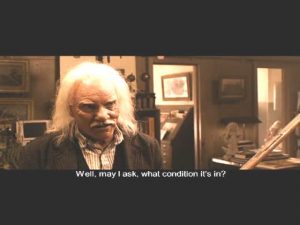
Part of the experience of a book fair, and not one overly discussed for a reason, are the partnerships and the collaborative aspects of the book trade. You don’t necessarily have to go at this alone. Your comrades have your back (or your spine, [excruciating pun intended] which plays out when scouting or acquiring other material to add to the overall inventory. How many times have you heard, “Oh, X, would love/need this!?” If you are willing and able, then serendipity has its moments, in addition to critical partnerships.
It was excellent for me to work along side Brian Cassidy, veteran bookseller and long-time Lux Mentis booth partner; Michael Laird, newly discovered witchcraft buddy; book goddess, Kara Accettola; the adorable and sharp, Jonathan Kearns; and equally as adorable and bright, Simon Beattie. I would also like to recognize, the entire Pirages team [good lord, ya’ll need a drink], Ed Sanders and Travis Low [horns up], Fuchsia Voremberg [hugs], Tom Congalton, and Ashley Wildes. I think Ashley encompasses the entire fair sentiment in one image:
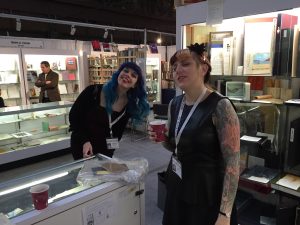
Ashley diffuses the situation with mermaid-like qualities, as Kim wishes Ian to contract mind fleas. [Note: drinks handled with appropriate care]
It would be remiss to not recognize some of the book artists and book binders, very important, as representing strong work is a pleasure and a privilege. Both Colin Urbina and Erin Fletcher make overwhelmingly inspiring work, glad to have them in both physical form and function appearing in New York; Michael Kuch, again mind-blowing work; Peter Bogardus; Russell Maret, exceptional new work; Nancy Loeber, representing both fairs [shadow fair]; Christina Amato; Leslie Gerry; Mindy Belloff; María Verónica San Martín; Peter Koch; newly acquired book artist Alexandra Janezic; and of course, the dynamic duo of Marshall Weber and Felice Tebbe at Booklyn. [Do I sound like a broken record or an Oscar speech? geez.]
So, what’s next? Fortunately, we were able to jump over to the “shadow” shows both uptown and across the street to visit both book artists and snap up some “brutally cool” items for down the road to make appearances in iterations of catalog lists forthcoming. What did strike our fancy this year? A selection of things that caught our eye:
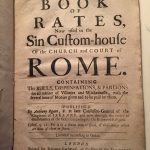
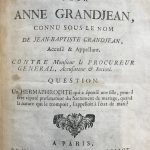
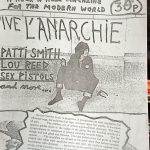
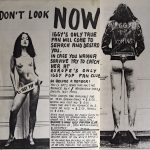
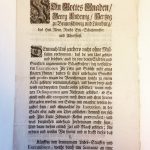
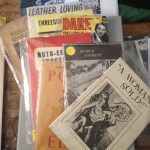
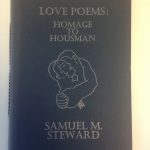

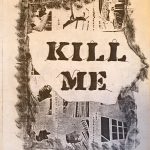
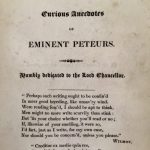
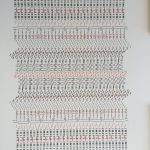
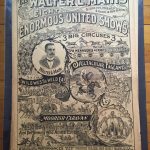

By: Kim Schwenk,
on 4/18/2016
Blog:
Lux Mentis, Lux Orbis
(
Login to Add to MyJacketFlap)
JacketFlap tags:
new york,
Book Fairs,
abaa,
antiquarian books,
book collectors,
esoterica,
Book Trade Commentary,
american folk art museum,
lux mentis,
Add a tag
Like my comrade, the illustrious scribe of Bibliodeviant, I will also traipse through a serial recount of *my* first New York ABAA Book Fair in a similar fashion and how the sideshow, that is Lux Mentis, embellishes the landscape of the book trade and book collecting like the carnival we seem to entertain. Inspired, though by the words of Mr. Kearns, I would like to address the idea of bookselling as identity and image briefly.
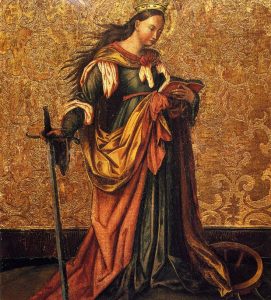
Girl, get a grip
After working over 20 years in library land and visual arts culture, I’ve worn several hats. However, not just one will underscore my identity, which to some I apparently wear openly and ripe for criticism. We can model ourselves in such a way that the world might fantasize about librarians in that perverse and/or cryptic and ‘monkish’ kind of way, or we can shine bright like a diamond* with a freak flag of superb owning up to our singular individuality, our own individual prowess to flourish and thrive in this profession.
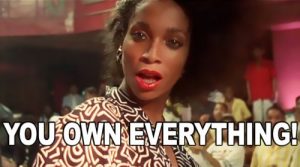
Basically, the same perception applies to hungry, curious, and experienced visitors at your book fair booth, in your house, your library, your bookshops. You never know what they might bring to the table. Same goes for your fellow booksellers. So, regardless if you have marked skin, blue hair, fancy tweeds, tortoise shell glasses or honest awkwardness, we corral a fierce sense of advocacy for printed and written matter that gives these manifestations of glory multi-generational lives that are passed through a series of hands, hearts, and minds. We have the opportunity to support and create libraries, research, passions, and histories for people, otherwise drowning in the mediocrity in the world. We will find success in those connections, rather than in a litany of judgment based on gender, appearance, and other personal identities.
I could further throw a tirade of shade*, but rather, let’s tunnel into the rabbit hole of New York. As others have mentioned, New York is on fire with grit and action, unlike any other metropolitan in the US, however like I mentioned in a previous blog, the city is a hotbed for bibliophilic intellectualism and performative ingenuity. The New York Antiquarian Book Fair is a force and now I know compared to the somewhat laissez-faire attitude of California (as least Pasadena), I understand why it operates as such. The Park Armory building is a gorgeous architectural example of late 19th century Gothic revival design suitably fitting to encase a labyrinthine maze of booksellers. I felt sort of enveloped in a skeletal shell, ironically housing the biblio-madness for the next few days.
Before set-up started on Wednesday, I can’t slide by without saluting a few notable events and people. Through a blizzard (ha!), we made our way through the quiet snow of Massachusetts to the insanely talented home of Michael Kuch, artist, to pick up the latest iteration of work debuting at the fair [images to follow]. We also lavished in the presence of Marvin Taylor and Charlotte Priddle at the Fales Library & Special Collections, NYU where I pawed around the stacks a bit, as well. Lastly, I would be lying if I wasn’t fidgeting like a 3 year old needing to pee, because I was able to see the Mystery and Benevolence exhibit at the American Folk Art Museum. Get your secret handshake on.
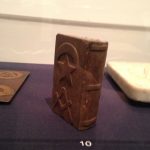
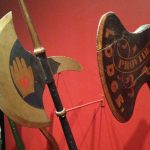
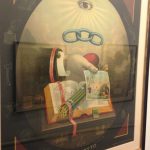
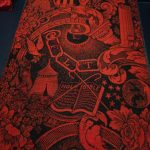
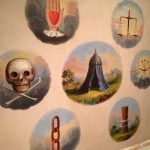
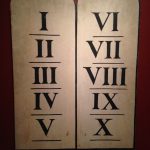
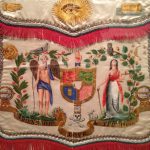
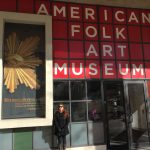
To be continued…[Next up, witness me!*]
*If any of you get my pop culture references, you are Gucci. Yes, I am a metalhead who listens to Ri-Ri.
We are pleased to offer a (reasonably) brief tour of our booth at the 2015 ABAA book fair. It was a great weekend (report and images to follow).
There's so much talk about new technology, of tablets and Apps, e-Books versus print publishing, it's difficult to know where you stand sometimes. None of us wants to be left behind in this digital revolution, we're told that e-publishing is a path of opportunity for illustrators. That's good news, I'm all for new opportunities, I must admit to being amazed by what can be achieved with technology. Nevertheless I'm not sure where I personally fit into this heady world of new media. I suppose I'm enthusiastic for, but not an avid enthusiast of ebooks and their like.
The more I contemplate ebooks, the more I think back to why I pursued the publishing industry in the first place. I thought I'd take a moment then to post a bit about what I love about old books. And I mean old books!
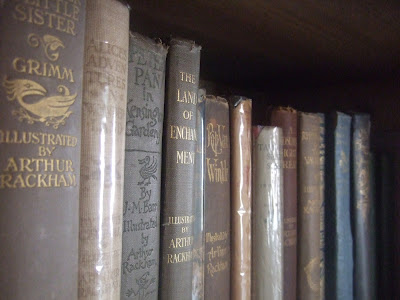 |
| Golden Age treasures |
I became an illustrator as the result of a love affair with books, initially from childhood trips to the library, where I discovered Edward Ardizzone, Quentin Blake and E.H. Shepherd, and fascination with the illustrations in my mum's old 1920's volumes of Fairy Tales. Thereafter I became absorbed in coffee-table art and history books showing the work of painters, engravers and especially graphic masters like Hogarth and Rowlandson. And then at the particularly impressionable age of 15, came the discovery of the
Golden Age illustrators: Arthur Rackham, Edmund Dulac, the Robinson brothers and their contemporaries, and I was transported, head-over-hills, to kingdoms far away. When it comes to books, I'm an incurable romantic.
In this post though, rather than the illustrators and their work I want to focus on the media - the printed books. Aside from the superlative quality of the art, the production of the books themselves was an inspiration in their own right, especially the lavish
Gift Books of the era. Years ago I began collecting First and Deluxe edition titles from the
Golden Age, mostly Arthur Rackham but others too, sometimes through auction, some via antiquarian bookshops. I won't go on about the years spent blissfully rummaging through the shelves of antiquarian and second-hand bookshops looking for hidden rare nuggets. Suffice to say - I'm a disciple, pen and ink masters have enraptured me throughout my career. Despite all the upheavals in my life over the years I still have a couple of bookshelves enshrined as homage to my heroes.
 |
| The first Gift Book I got hold of was this battered 1912 edition of Peter Pan in Kensington Gardens, which remains one of my favorite books illustrated by Arthur Rackham. Published by Hodder & Stoughton, it was printed by T & A Constable in Edinburgh. |
What is the "
Golden Age"? In loose terms, it's the period between the broad introduction of modern photographic 4-colour printing in the 1870's (when for the first time the work of illustrators could be reproduced exactly as the original art) and the close of the First World War, which heralded a change in publishing tastes and budgets.
What is a "Golden Age Gift Book"? Usually these were large sized (quarto or similar) books, often released to time with the Christmas season to be presented as gifts. Collected fairy tales, classics and modern fantasies were most common. The standard 'trade' editions were of cloth binding with inlaid gold lettered cover, often including illustration and designed by the illustrator themselves. In contrast dust jackets were often quite austere and surviving examples are rare today.
 |
| Cover of Milton's Comus with Rackham's Dust Jacket. Published by Heinemann, printed by The Cornwall Press in London in 1921. |
The books were printed in
letterpress on high quality heavy paper, with generously wide margins, and often interspersed with black and white illustrations. The pages were sometimes left untrimmed, leaving a rough uneven edge, all of which adds to the sense of quality.
The real stamp of the gift book though were the colour illustrations. As the process of photo-litho colour reproduction was quite new, colour illustrations were printed on separate sheets of coated art paper 'plates', which were glued down onto coloured mounting sheets, usually just along one edge, and covered with a sheet of tracing paper carrying the image caption. The tracing paper was ostensiably to protect the delicate colour image from rubbing on the paper, though it was soon clear this was unnecessary and the practice became more for show and to convey a sense of exclusivity. These were then bound into the book separately.
 |
| Deluxe edition of Rackham's 1907 Alice's Adventures in Wonderland - big margins, tipped in colour plate and tissue guard. |
For me there is no other reading experience more satisfying than browsing through these books. The sense of lifting the tracing paper to see the gem of illustration beneath is a pleasure only books can give. These are books to be read with deference. The trade editions were intended to be read, re-read and treasured by children and adults, and they still have that effect today. There will never be an App that gives me the same glow as handling these old tomes.
 |
Title page of the 1908 Trade first edition of Rackham's Midsummer Night's Dream. Again published by Heinemann, and printed by The Ballantyne Press in London.
|
More elevated still though are the signed deluxe limited editions. Ordinary Trade editions would run to 15,000 or more for their first impression, but for the top selling artists a limited number of specially bound deluxe editions would be printed, generally between 350 and 1,000 copies only, each numbered and signed by the artist. The deluxe editions were larger and heavier than the trade editions, usually bound in heavy buckram rather than cloth, with ribbon ties (few of these survive) and sometimes with an extra illustration. These are my Deluxe edition Rackham's :


These books demand a lot of respect. Running my fingers lightly over the page, I can feel the impressions of the text and black and white illustrations pushed into the surface of the paper by the blocks, the creak of the spine as I slowly, methodically turn each page, then the wonderful sense of anticipation as I reach a colour illustration and peel back the delicate tracing paper to reveal the image beneath. The limited editions have a more exclusive quality to them, the pages more difficult to turn, not for prying children's grubby fingers. And that kind of defeats the object of the book! So as
reading books I actually much prefer the trade editions, though I still occasionally read to my daughter at night from signed copies of Rackham's 1909
Grimm or 1918
English Fairy Tales.
 |
| One of William Heath Robinson's greatest works, and long before the contraptions that made him a household name - The Works of Rabellais, originally published in 1904, this is the Navarre Society edition 1921, printed by Richard Clay & Sons in Bungay, Suffolk |
Though such Gift Books went out of fashion in the 1920's, very fine books by smaller presses continued to be made until World War 2 knocked the stuffing out of the market. Fine books have returned since then of course. I've always dreamed of seeing my books made like those of my heroes. This is not an ambition with much likelihood of success, though I knew that before I became an illustrator. It didn't stop me dreaming though, I'll never forget the first time I handled these old books, my love for children's illustration and the Golden Age era in particular is what set me on the determined path to follow in the footsteps of the "greats".
It's not only the big Edwardian gift books I get excited about though, any old well illustrated book is liable to attract my attention, my collection ranges from books big or small, finely produced or WW2 budget printing. This is all in addition to the shelves of modern picture books etc. I've precious little space for anything now, though I did relinquish a lot of books when I moved back to the UK, some which I now regret.
 |
| War economy edition of Mervyn Peake's Household Tales |
The oldest books in my little collection are not children's books at all, but a handful of military diaries from the 1790's, published campaign reports of officers serving under the Grand old Duke of York in Flanders in the early wars of the French Revolution (it's a period I've long been fascinated by). Few of these are illustrated, but they do contain some beautifully detailed engraved maps and calligraphy. Though very different from the Golden Age books, I love them just as much. The sense of these works being published in the forefront of such incredible times adds to the fascination.
 |
Frontespiece of the two volumes of
An Accurate and Impartial Narrative of the War, by an Officer of the Guards in Two Volumes Comprising the Campaigns of 1793, 1794, and the Retreat Through Holland to Westphalia in 1795. Published by Cadell and Davies in 1796. |
 |
Map of the Duke of York's position at Tournai, June 1794 in Jones's History of the British Campaigns of 1794 & 1795. Printed by Swinney and Hawkins in Birmingham 1797.
|
So that's my little indulgence. I don't add to the collection nowadays, budget, space and circumstances prevent that, but I'm holding onto what I've got. These books have travelled with me from the UK to Japan and back again so I'm not about to get rid of any of them soon.
E-books may be an exciting future for children's publishing, and I certainly aim to be part of that. But alongside the digital boom many publishers are saying that a new focus on collectable, well produced, carefully crafted books is also a way forward to re-ignite the traditional printed book market. I think that's very good news.
I wouldn't say I love them, but I've no problem with vultures, they're a crucial part of the eco-system, their talent for waste disposal is unparalleled, without them we'd be in big trouble. In India the catastrophic decline of the vulture population has led to epidemics and streets filled with rabid feral dogs.
To my knowledge there are no vultures in Queen's Park, not that I've seen anyway, though I have my suspicions about some locals. The closest we get is magpies, not quite on the same level.
It's not the feathered variety of vultures I'm thinking of, but the literary kind. The sort that, when you're gone, take what remains of your reputation, and clean, strip, sell and market your work. I refer of course, to those efficient scavengers the galleries and bookshops.
I've been an incurable fan of antiquarian bookshops since I can remember, the smell of musty volumes on dimly-lit shelves bent with the weight of the printed word, the anticipation of discovering a valuable gem missed by the shop owner, sold for a fraction of it's true worth. The joy of perusing beautifully crafted tomes I could never afford, as well as more commonplace insights into everyday life of yesteryear. Then, as I began working and budget increased, I slowly started to accumulate work by my favourite illustrators - first editions of E. H. Shepherd, Rackham, Dulac, Ardizzone, Peake. As I don't drive and had no interest in sports, collecting books was one of the few areas I'd reward myself, what more fitting way to celebrate my publishing royalties than buying books by my long-gone heroes.
I avoided book dealers when I lived in Japan, I saved my old book hunting for my trips back to London, and kept the books in the UK. There are antiquarian bookshops in Tokyo (especially in the
Jimbocho district), but the kind of books I sought (Golden Age Illustrated Children's) are imported and vastly overpriced, while the Japanese climate is never kind on printed paper.
 |
| Part of the dry-case collection while in Japan |
I eventually shifted my UK collection to Tokyo, but invested in a humidity controlled dry case due to the intensely damp, sultry summers. Such precautions were absolutely necessary. My books have travelled from one side of the world to the other and back again, I've cared for them like my own offspring.
Now I'm based back in London the lure of the old bookshop beckons once more.
For me, antiquarian bookshops are the ultimate tribute for an illustrator. After you're gone, when all that's left are your old books and a few precious originals in galleries and private collections, to have your work exalted in price and preserved on bookshelves is a wonderful thing.
It’s June, season of commencements — the start of summer, the start of sunshine, and, if you are graduating from college, the start of the rest of your life. I remember when I completed my English degree, way back in the 20th century. Toward the end of the school year, employment recruiters came on campus. Many of my business major and engineering major friends knew where they would commence with their post-college careers even before graduation was at hand.
We English majors, though, we were not usually so definitive in our career plans. Editing the literary magazine or writing for the school paper was not likely to make an employer think you could be the next designer of yet another, smaller computer chip in furtherance of Moore’s Law. While an English major might do well with creative writing, he probably didn’t understand a thing about creative accounting. With a good working knowledge of Medieval Literature and fairly decent writing and analytical skills, we English majors were not really of use in the business world beyond writing advertising copy or technical manuals. No one recruited us.
Well, English majors, I’m here to tell you that although you probably won’t see us coming to recruit you at your local college campus: Antiquarian booksellers want you!
That’s right. There are simply not enough antiquarian booksellers, and antiquarian booksellers under age 40 are about as rare as Gutenberg Bible. That’s because, if you’re like me, you love books, but you simply may not know about the world of antiquarian books. Yes, I was an English major. I worked for a book store, a book publisher, and my university’s library during college, yet I was completely unaware of the existence of antiquarian books, which, let’s face it, are not often on display in publicly accessible places. If you don’t see them, you might not know they exist; or, if you know they exist but you don’t see them, you might not understand what’s so great about old books.
When you get involved with antiquarian books, you get involved with much more than a book. You learn about history, bibliography, and the importance of preserving primary sources. If you’ve seen movies like National Treasure, then you’ll already know that the occasional car chase and explosion will be a part of your career, too.
When I discovered the world of book collecting and antiquarian bookselling some years after college, I wondered why I had never known that antiquarian bookselling existed as a career.
Is antiquarian bookselling right for you? As the bibliophile John Hill Burton once said of antiquarian booksellers, “It is, as you will observe, the general ambition of the class to find value where there seems to be none, and this develops a skill and subtlety, enabling the operator, in the midst of a heap of rubbish, to put his finger on those things which have in them the latent capacity to become valuable and curios.” That description pretty much sums it up.
If you think antiquarian bookselling might be right for you, here are a few questions you might ask yourself: Do you like books? Are you especially in love with the physical beauty of old books? Do you revel in the arcane information to be found in some old tomes? Do you possess at least a few rudimentary business skills? Do you love to learn? Do you love to sell? Do you believe in yourself enough to build your own business even if no corporate recruiters came knocking at your door? Do you prefer autonomous self-direction over instructions handed down from a boss? Can you work alone, content with your books and yourself? Can you deal with the public, your customers? Can you withstand the physical injury of the occasional collapsing bookcase and numerous paper cuts without the benefit of a good workers’ comp program?
Does this describe you? If so, put down your Kindle and check out the world of antiquarian books.
Chris Lowenstein
Book Hunter’s Holiday
3182 Campus Drive #205
San Mateo, CA 94403
(415) 307-1046
[email protected]
http://www.bookhuntersholiday.com
Blog at: http://bookhuntersholiday.wordpress.com








































What an absolute treat, John. Thank you so much for sharing your precious collection. Rackham's influence on you is obvious, and part of what makes your work so rich and beautiful. I do think as digital ease and convenience takes over our world, there's a growing hunger for tactile craftsmanship.
(By the way, Sam is really me - Janet. That's the problem with my son using my computer and not signing out.)
You write beautifully about your books, I almost feel as if I have been leafing through them myself.
I have seen and handled books like this but knew very little about the various forms of production that were used. This has been a real education and a delight to read.
I am almost too jealous to breath! Gorgeous!
Beautiful post about your book collection, John. I feel exactly the same way about my childhood books. They're a little beat up after all these years because they were much loved, but I would never give them up.
Thank you everyone! I try not to emulate the illustrators (though it inevitably comes out in some ways), however I hark after the craft and care put into the work and production. Ah, different times...
Lovely - thank you for sharing your delight, John. I believe publishing will divide - there will be e-publishing galore for the transient & the 'now' - and there will be beautiful books for keeps ( to coin a phrase)
Philippa
That's fantastic! Thank you for sharing. I love that you read some of them to your daughter. I read to mine from first edition Beatrix Potters and so on. It *is* special
Marvelous: I too have fallen under the spell of old books, but in my case both for the interesting layouts and for the content. Old gardening books (pre 1950) have either more or different information than current ones. The illustrations, while not up to Rackham's quality, are quaint and often delightful.